Global equity markets have experienced a sharp downturn during the past three weeks since President Trump announced sweeping new tariffs on 2 April.
Markets initially fell sharply before retracing slightly on news that the US administration had implemented a 90-day pause on tariffs to allow countries to negotiate trade deals.
But recent volatility in markets and ongoing economic uncertainty has continued to weigh heavily on most asset classes.
The S&P 500 index and the MSCI World index saw sharp declines of over 10% when Trump’s new trade policy sparked widespread recession fears, before paring back some losses.
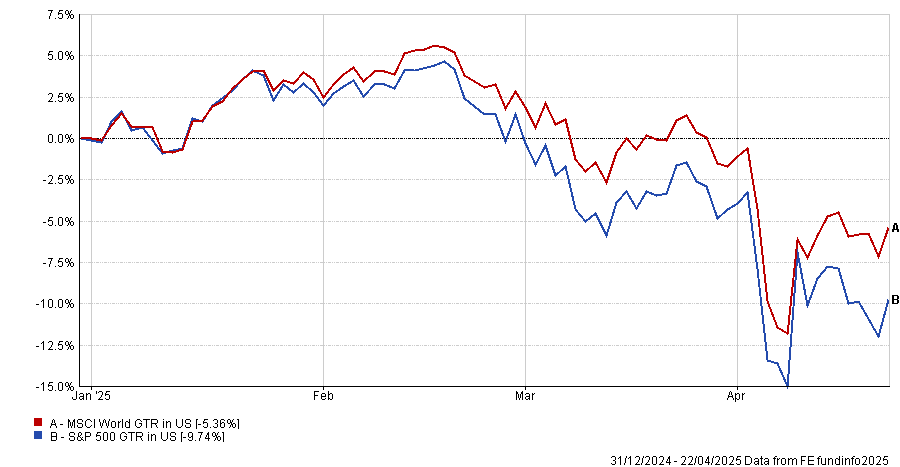
However, there are a handful of funds that have delivered strong positive returns since tariffs were announced, with the vast majority being gold-related strategies.
Gold has been one beneficiary from the recent market turmoil, as the price of the precious metal rose from $3100 per ounce to briefly hitting $3500 per ounce.
Certain fixed income, real estate and hedging strategies have also delivered strong returns in the weeks following tariffs were announced.
Below, FSA highlights 5 funds from different sectors that have achieved market-beating performances since 2 April, according to data from FE fundinfo*.
Ninety One Global Gold
The Ninety One Global Gold fund has been one of the best-performing gold strategies since tariffs were announced. It has returned 16.77% over the period.
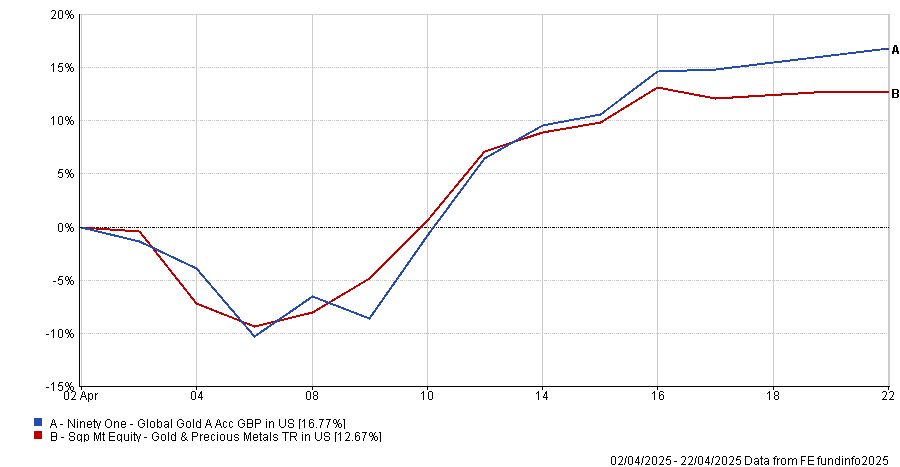
Managed by George Cheveley, this fund invests in global companies involved in gold mining and other precious metals.
As of the end of March, its top three holdings were Gold Fields (7.6%), Northern Star Resources (7.4%) and Anglogold Ashanti Plc (7.4%).
Aberdeen Global Risk Mitigation
The Aberdeen Global Risk Mitigation strategy has returned 11% since 2 April.
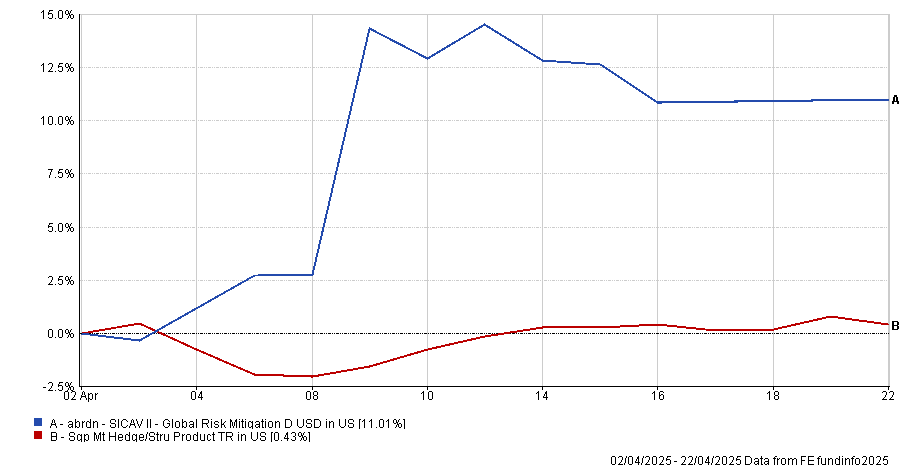
It is a diversified hedging strategy which aims to deliver strong positive returns when global equities see material declines and volatility is high.
It uses a range of different methods such as swaps, futures and options to hedge against market volatility through four underlying strategies: first risk, tail risk, systematic trend and defensive factors.
First risk strategies are overall short equities and long volatility, tail risk strategies are long volatility and volatility relative value, systematic trend benefits from trending markets up or down, and defensive factors invest in assets with stable and low correlation.
Fidelity Enhanced Reserve Fund
The Fidelity Enhanced Reserve Fund strategy has returned 8.09% since tariffs were announced.
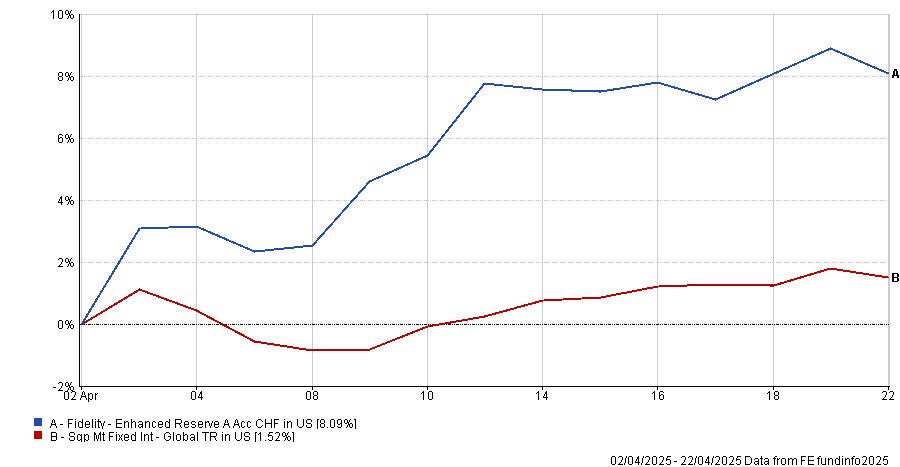
Managed by Kyle DeDionisio, Belinda Liao, James Durance and Terrence Pang, this $605m bond fund invests in debt securities globally.
The strategy had an ultra-short duration going into 2 April which has been likely beneficial given the recent swings in long-dated government bonds.
iShares European Property Yield UCITS ETF
The iShares European Property Yield UCITS ETF has returned 11% over the period.
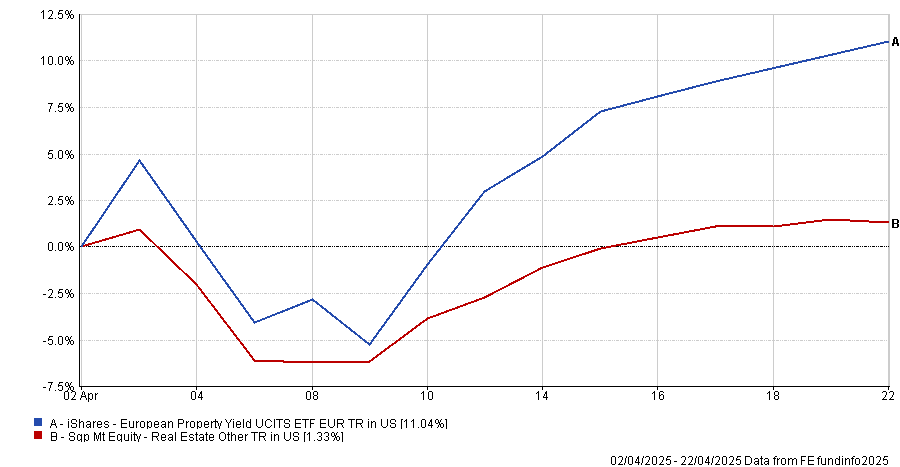
This $1.7bn exchange-traded-fund managed by BlackRock’s iShares franchise invests in listed European real estate companies and real estate investment trusts (Reits).
Its largest holdings include German multinational real estate group Vonovia and Swiss-European real estate giant Swiss Prime Site.
Amundi Volatility World
The Amundi Volatility World fund has returned 8.5% since tariffs were announced on 2 April.
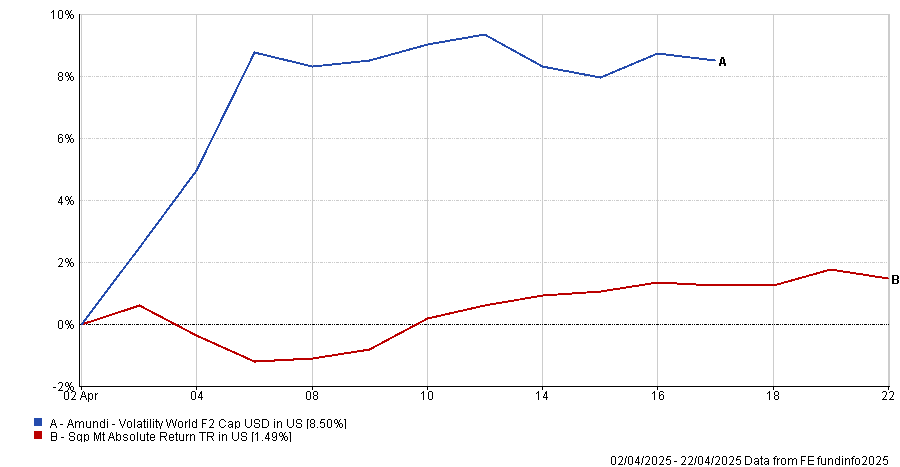
This $592m absolute return strategy is managed by Gilbert Keskin, Jérôme Gunther and Philippe Imhoff.
It invests in options, swaps and money market instruments to deliver a return above the Secured Overnight Financing Rate (SOFR) +3% Index.
*The performance figures are according to data from FE fundinfo, measured in US dollars.

















